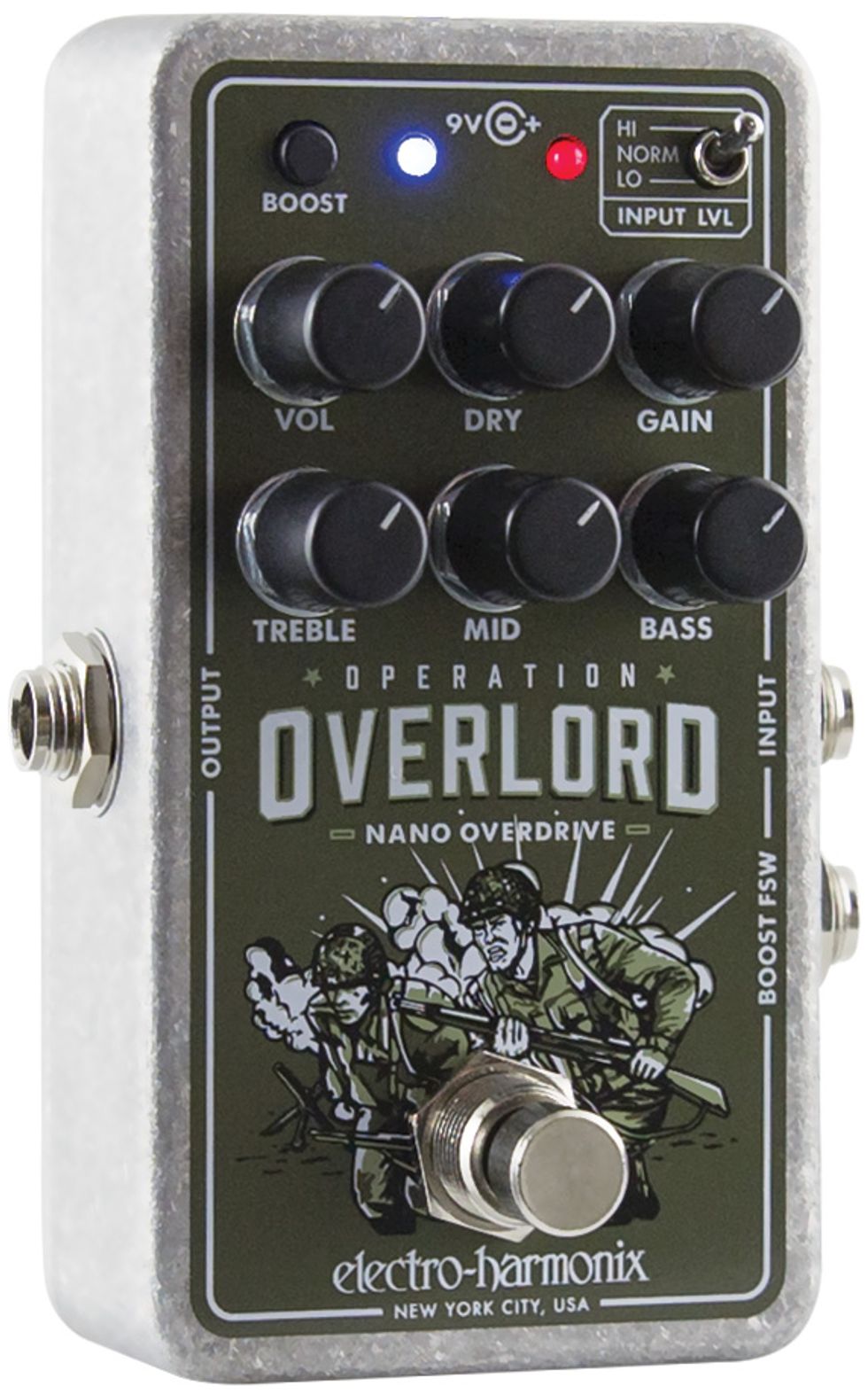Recorded using a Celestion Ruby-loaded Goodsell Valpreaux 21 miked with a Royer R-121 feeding an Apogee Duet going into GarageBand with no EQ-ing, compression, or effects.
Clip 1: Eastwood Sidejack Baritone DLX with Curtis Novak Jazzmaster Widerange bridge pickup, first with Overlord bypassed, then engaged first in high-gain mode, then normal-gain mode, then low-gain mode, each time with boost function bypassed and volume at 10 o’clock, dry at minimum (full wet), gain at max, treble and mid at 9 o’clock, and bass at 3 o’clock.
Clip 2: Squier Classic Vibe ‘70s Jaguar with Curtis Novak pickups (neck pickup with high-pass filter bypassed), first with Overlord bypassed, then engaged in normal-gain mode (with boost function bypassed) and volume at 1 o’clock, dry at minimum (full wet), gain and treble at 9 o’clock, mid at noon, and bass at 4 o’clock.
RatingsPros:Versatile controls (hooray for the mid knob!) enable a wide variety of overdrive and distortion possibilities—at an incredible price. Cons: Clean sounds could have more sparkle. Pushbutton/footswitchable boost function adds bass and low-mid content, not just dBs. Some high-gain settings yield radio-frequency interference. Street: $89 (includes 9V adapter) Electro-Harmonix Nano Operation Overlord ehx.com | Tones: Ease of Use: Build/Design: Value: |
Even compared to Electro-Harmonix’s own track record of packing cool sounds into affordable stomps, the Nano Operation Overlord overdrive boasts impressive bang-for-your-buck features: It has the usual volume and gain controls, but it’s the independent 3-band EQ controls and wet/dry knob that really tailor its capabilities for a wide array of instruments and styles. There’s also a 3-position input-level toggle for either accessing higher-gain sounds or adapting the Overlord to different pickups and instruments (including bass or keyboard), as well as a boost function accessible either via top-panel pushbutton or a separate footswitch (not included).
The Overlord will likely strike many as a bounteous, ultra-affordable one-stop option for adding dirt and/or dBs to both guitar and bass, particularly as the dry control is a big asset for keeping a strong fundamental in overdriven low-end content, while, for both instruments, the midrange control adds crucial tonal flexibility often overlooked even in overdrives costing many times the Overlord’s price. Those focusing solely on guitar use may view the dry knob and input toggle as somewhat superfluous or unnecessarily complicated, but even if you don’t need Overlord for all the uses EHX envisioned, it offers a lot of solid 6-string tones—from subtle, relatively transparent drive to mellowly scooped overdrive, crisp crunch, honky sqwonk, or burly, aggressive saturation well outside the overdrive realm.
Test Gear: Squier Vintage Modified Tele Custom and Eastwood Sidejack Baritone DLX with Curtis Novak pickups (JM-V and Tele-V, and JM-WRs, respectively), 1976 Fender Vibrolux Reverb, Fender Ultra Jazz bass and Rumble 200 1x15 combo, MXR Reverb, Ibanez ES-2 Echo Shifter















![Rig Rundown: Russian Circles’ Mike Sullivan [2025]](https://www.premierguitar.com/media-library/youtube.jpg?id=62303631&width=1245&height=700&quality=70&coordinates=0%2C0%2C0%2C0)

















